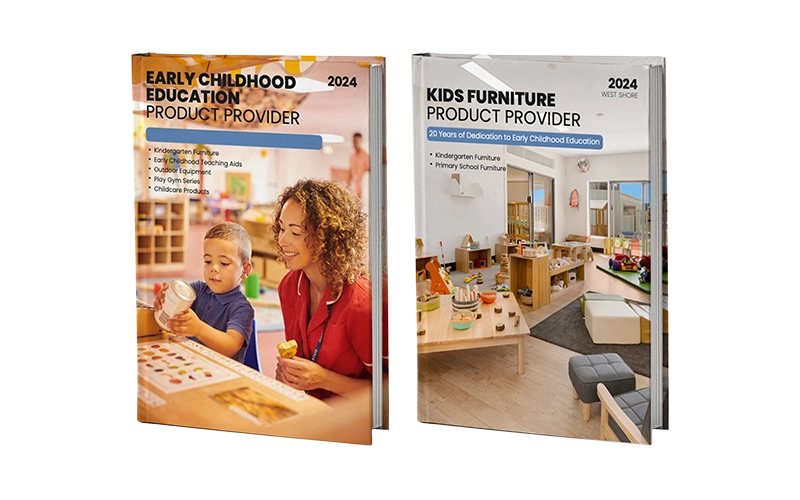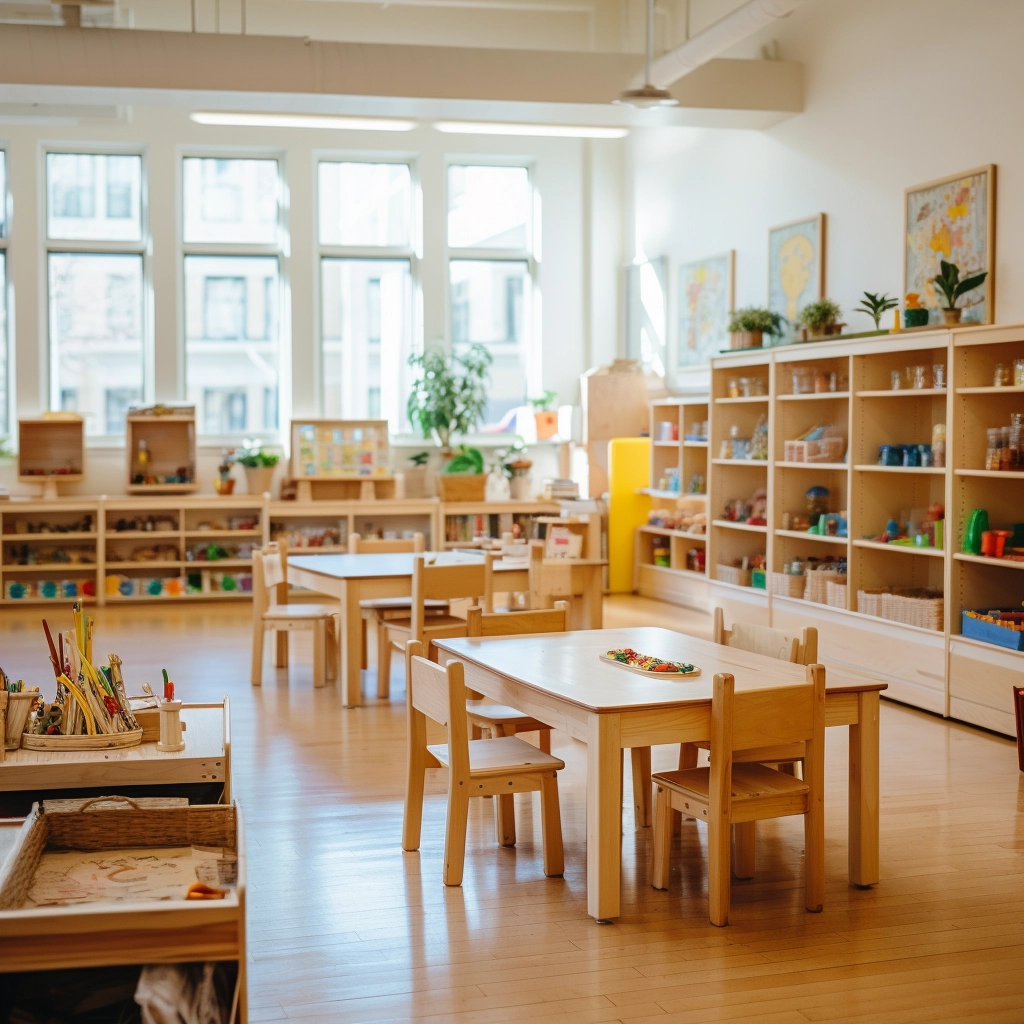High-Quality Classroom Bookshelf for Organized Learning
Create a well-organized and inviting classroom with our high-quality preschool bookcase or daycare bookshelf options. Designed to support early childhood development, these bookshelves offer ample storage for books and educational materials, keeping everything easily accessible for young learners. Crafted from durable materials, our bookcases are perfect for Montessori environments and preschools, with various designs and sizes to suit any classroom layout.

Various Types and Styles of Classroom Bookshelves
Our range of classroom bookshelves includes a variety of open shelves, wall-mounted shelves, mobile shelves, and adjustable units, offering a wide range of classroom bookshelf styles to suit different classroom layouts and storage requirements. Carefully crafted to meet the specific needs of educational settings, each preschool bookshelf helps foster a productive environment where students can thrive. Explore our collection to find the perfect solution for your classroom's unique needs.

Book Display

Bookshelf Stand with Storage

Double-Sided Book Display

Bookshelf and Toy Organizer

Floor Book Display with Handles
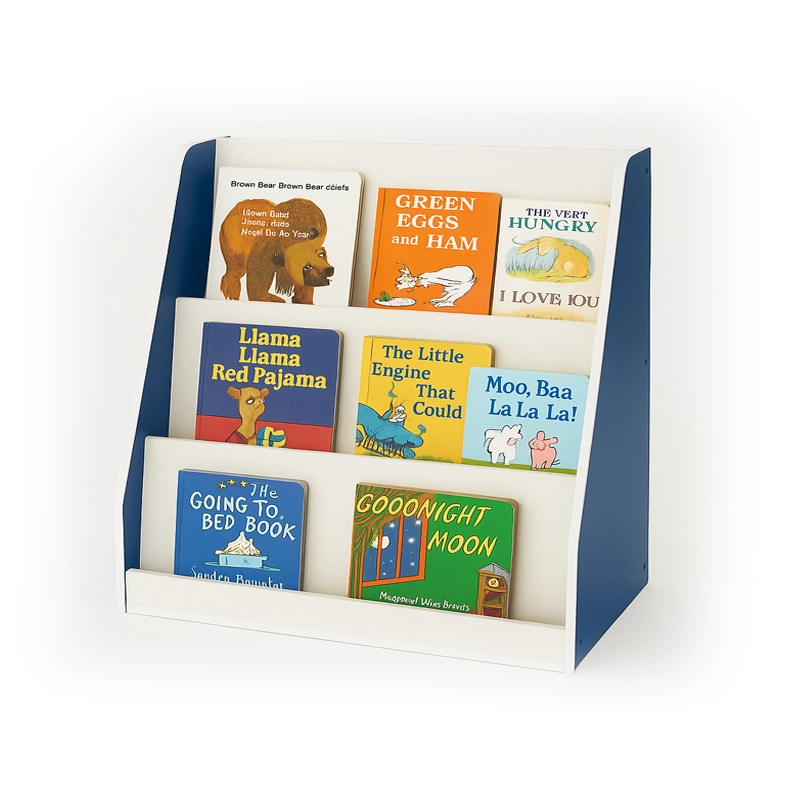
Kids' Colors Book Center

Mobile Book Organizer

Mobile Preschool Book Cart

Kids Rotating Bookshelf

Tree Shape Bookcase
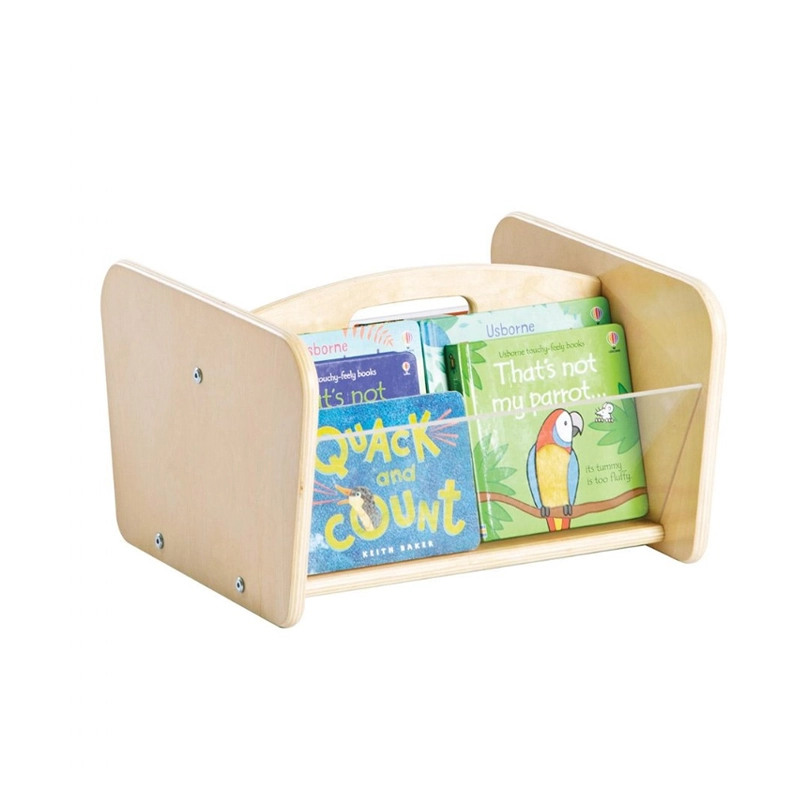
Toddler Book Bin

Wall Mount Bookshelf
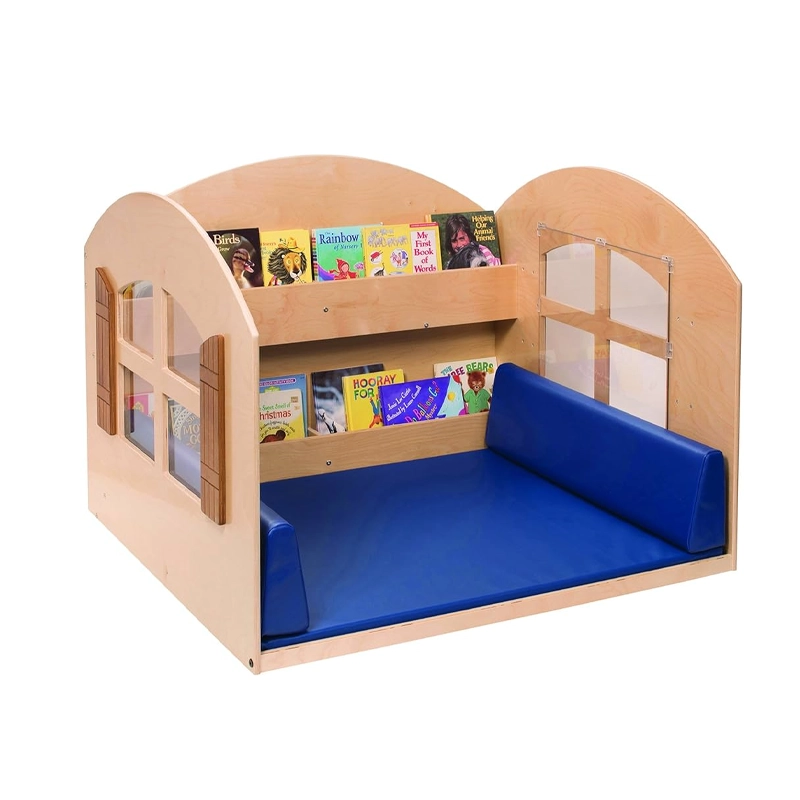
Children’s Reading Nook

Nature View Reading Nook
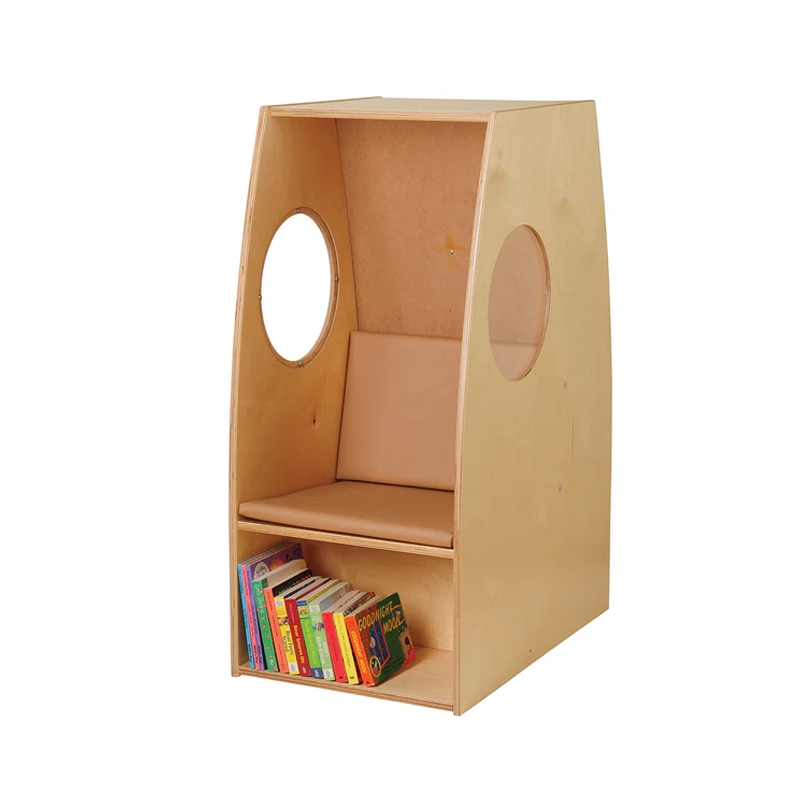
Cozy Literacy Retreat
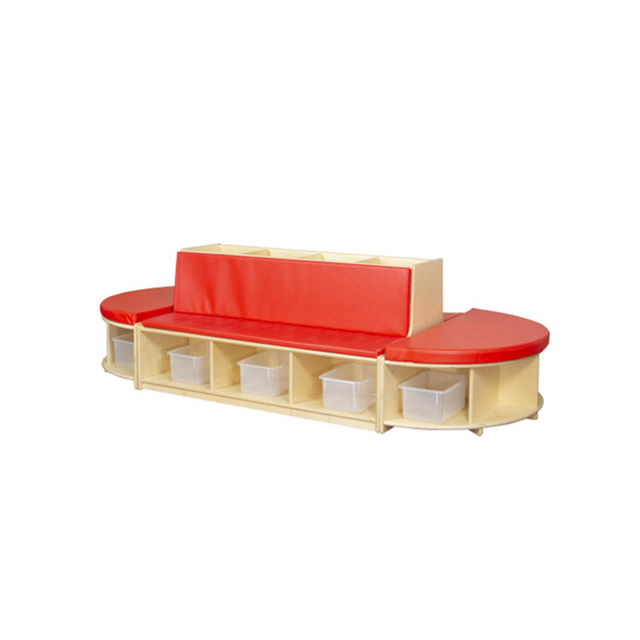
Sided Bench Package
Trusted Manufacturer of High-Quality Classroom Bookshelves
With over 20 years of experience in designing and manufacturing preschool furniture, we specialize in providing top-notch Classroom Storage solutions that enhance organization and efficiency in early education spaces. Our customized storage units, from shelving and cubbies to mobile carts, are crafted with safety, durability, and functionality in mind. We are proud to have served numerous educational institutions worldwide, helping them create clean, organized classrooms that foster learning. Our one-stop service includes design, manufacturing, and delivery, ensuring a seamless experience from start to finish. Trust us to transform your classroom with reliable, high-quality storage options.
Materials Used for Durable Classroom Bookshelves
Our classroom bookshelves are crafted from a variety of high-quality materials, ensuring durability, safety, and practicality for your learning environment. Below are the materials we use for our bookshelves:
-
Birch Plywood A durable and environmentally friendly material often used for high quality furniture making, with a smooth surface and even grain.
-
Beechwood Known for its hardness and durability, Beechwood has a warm color tone and fine grain, making it ideal for high-end furniture.
-
Rubberwood This material is ideal for children's furniture because it is strong and durable, and also more environmentally friendly.
-
Pine Wood Pine is a lightweight wood that is easy to work with and has a natural aroma and soft tones.
-
MDF This material is flat and smooth, suitable for surface painting or laminating a variety of finishes, commonly used in more economical furniture.
-
Particle Board Pressed from wood chips and resin, lower cost, suitable for simple storage cabinets.
-
Metal Opt for metal units for supreme durability and ease of maintenance. Our metal cabinets are designed to withstand heavy use and are available in a variety of powder-coated finishes.
-
Polymer and Plastics Lightweight and colorful, these materials are perfect for younger classrooms, offering safe and easy-to-clean surfaces.
Types of Preschool Bookshelves
When creating an effective and engaging learning environment for preschoolers, choosing the right preschool tables and chairs is essential. From versatile options like adjustable tables to space-saving folding designs, each type of table and chair is designed with specific functions in mind. Below, we’ll explore some of the most popular categories of preschool tables and chairs to help you choose your educational space.

Display Bookshelf

Practical Daycare Bookshelf
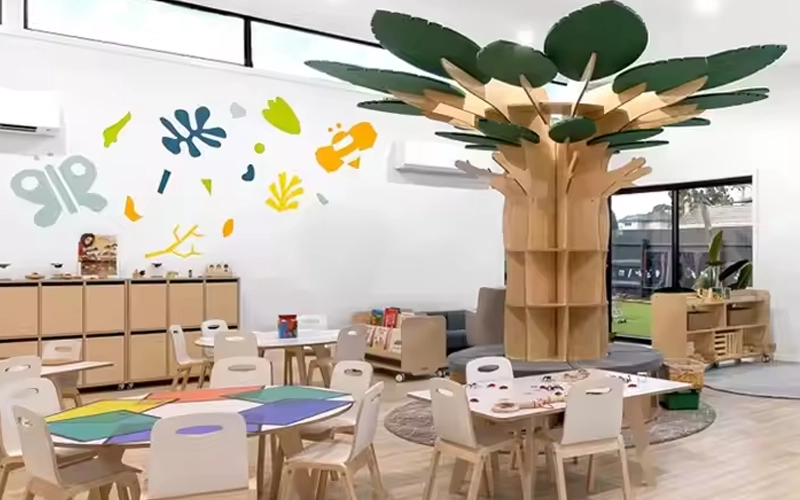
Decorative Bookshelf

Mobile Bookshelf

Wall-Mounted Bookshelf

Rotating Bookshelf
Wooden Bookshelves vs. Plastic Bookshelves vs. Metal Bookshelves
When selecting a bookshelf for preschool, it’s important to choose materials that are both safe and durable. Let’s compare three common types of materials used for bookshelves:

Wooden Bookshelf
These bookshelves are timeless, sturdy, and eco-friendly. Wood is a material that not only looks inviting in a classroom but is also durable enough to last for years. A wooden classroom bookshelf is often preferred for its natural aesthetic, which aligns well with educational philosophies like Montessori and Reggio Emilia. The natural grain of wood provides a warm, inviting feel that is perfect for creating a cozy reading nook.

Plastic Bookshelves
Plastic bookshelves are lightweight, affordable, and easy to clean, making them a good choice for classrooms with younger children. However, they may not be as durable or sturdy as wooden options and can feel less inviting in a classroom setting. While plastic bookshelves can be practical for organizing smaller items or toys, they may not always provide the same aesthetic appeal as wooden or metal alternatives.

Metal Bookshelves
Metal bookshelves are highly durable and can withstand heavy use. They are great for larger classrooms or spaces that require a bookshelf capable of holding a high volume of books. However, they can be heavier and less child-friendly, especially for younger preschoolers who may struggle to access materials on high shelves. Metal bookshelves are often more utilitarian in appearance and might not fit well with all educational philosophies.
| Feature | Wooden Bookshelves | Plastic Bookshelves | Very durable |
|---|---|---|---|
| Durability | Durable and long-lasting | Less durable | Very durable |
| Aesthetic Appeal | Aesthetic and natural look | Available in bright colors | Less versatile in appearance |
| Stability | Sturdy and stable | May not support heavy books | Highly stable |
| Eco-Friendliness | Eco-friendly options available | Made of synthetic materials | Often not eco-friendly |
| Weight | Heavier | Lightweight and portable | Heaviest |
| Cost | More expensive | More affordable | Can be expensive |
| Maintenance | Requires occasional polishing | Easy to clean | Low maintenance |
Advantages of Our Classroom Bookshelf
Kindergarten classrooms require furniture that combines functionality, comfort, and safety for young learners. Preschool tables and chairs are designed with these essential features in mind:
Durability
Our classroom bookshelves are built with high-quality materials. The durable construction ensures long-term use while maintaining a safe and reliable structure.
Stability
Each bookshelf features a reinforced base and rounded edges to minimize tipping risks, making them ideal for active learning spaces and high-traffic classrooms.
Size and Design
Thoughtfully designed with young learners in mind, our Montessori-inspired bookshelves have low, accessible shelving that promotes independence and keeps the learning space organized.
Versatility
More than just a place for books, our shelves offer multi-functional storage options for toys, art materials, and classroom supplies—supporting both order and creativity in early learning environments.
What is the Ideal Size for a Preschool Classroom Bookshelf?
Choosing the right size for a preschool bookshelf is essential for maximizing space and ensuring safety. For smaller classrooms, a compact bookshelf for preschool may be the best choice. These bookshelves can be placed in corners or against walls, keeping books organized without taking up too much room. For larger classrooms, a larger classroom bookshelf or even a wooden classroom bookshelf with multiple shelves can provide ample storage for a variety of books and materials.
| Bookshelf Type | Height Range | Suitable For |
|---|---|---|
| Low Bookshelves | 24–30 inches tall | Perfect for toddlers and young preschoolers. |
| Medium Bookshelves | 30–42 inches tall | Ideal for older preschoolers and kindergartners. |
| Large Bookshelves | 42+ inches tall | Best for classrooms with teacher-managed books or additional storage needs. |
| Wall-Mounted Shelves | — | Space-saving option for small classrooms. |
Safety First: Secure and Child-Friendly Preschool Bookshelves
Our preschool bookshelves prioritize safety to ensure a secure and enjoyable learning environment. Here's how we achieve this:
Enhanced Stability
Designed with a strong, balanced structure to minimize the risk of tipping, even in busy classroom settings.
Child-Centered Design
The low height and rounded corners provide easy access to books while preventing climbing or sharp edges.
Non-Toxic Materials
All our bookshelves are finished with non-toxic, safe coatings, ensuring no harmful chemicals are used.
Customizable Sizes and Designs for Different Classrooms
Yes! Customization options allow you to tailor Classroom Bookshelf to your preschool’s specific needs and theme. Some options include:
-
Material Options Choose from wood, MDF, or plastic, depending on the durability and budget of your classroom.
-
Color Selections Custom finishes that allow your bookshelf to blend seamlessly with the classroom decor, creating a cohesive environment.
-
Unique Shapes Opt for bookshelves for the classroom in creative shapes such as house-shaped, tree-shaped, or curved designs, which can make reading corners more inviting and fun for young learners.
-
Personalized Labels Include engraved sections or themed stickers to help organize books and other materials, making it easier for children to find and return books.
Best Preschool Bookshelf Styles for Different Educational Philosophies
The design of a preschool bookshelf plays a key role in supporting different teaching approaches. Both Montessori and Reggio Emilia bookshelves support children's growth, focusing on independence, creativity, and hands-on learning through different yet complementary philosophies.

Montessori Bookshelves
Montessori bookshelves are low, open, and child-accessible, fostering independence and self-directed learning. Made from natural materials, they feature simple, uncluttered designs that help create an organized and calm environment.

Reggio Emilia Bookshelves
Reggio Emilia bookshelves encourage creativity, collaboration, and exploration. Often flexible in layout, they combine natural materials with visually appealing arrangements, inspiring children to engage with books and materials thoughtfully.
FAQ
What is a Montessori bookshelf?
A Montessori bookshelf is a low, open-shelving unit designed for children, enabling them to access and choose books independently. It encourages autonomy and fosters a love of reading.
What is the difference between a bookcase and a bookshelf?
A bookcase is typically a larger, enclosed unit with doors, while a bookshelf is a simpler, open unit specifically designed for storing and displaying books.
Why are bookshelves important in the classroom?
Bookshelves help organize and display educational materials, making them accessible to both teachers and students. They promote a tidy learning environment and an efficient way to store and retrieve books.
How should I organize preschool classroom books?
Organize books by themes or subjects, and store them in labeled baskets or sections for easy access. This helps students find books that interest them independently.
How should I arrange a preschool classroom space?
Avoid “blind spots” where children are out of sight. Separate quiet and active areas to allow respect for different play needs. Create a cozy, quiet corner for children who want some solitude, and keep furniture away from walls.
What type of bookshelf is best for a small preschool space?
Rotating or wall-mounted bookshelves are perfect for small spaces, as they save floor area while providing easy access to books.
How can I ensure the safety of preschool bookshelves?
Make sure bookshelves are stable and secured to walls if necessary to prevent tipping. Opt for units with rounded corners and edges to reduce injury risks, and ensure they are made from non-toxic materials.



